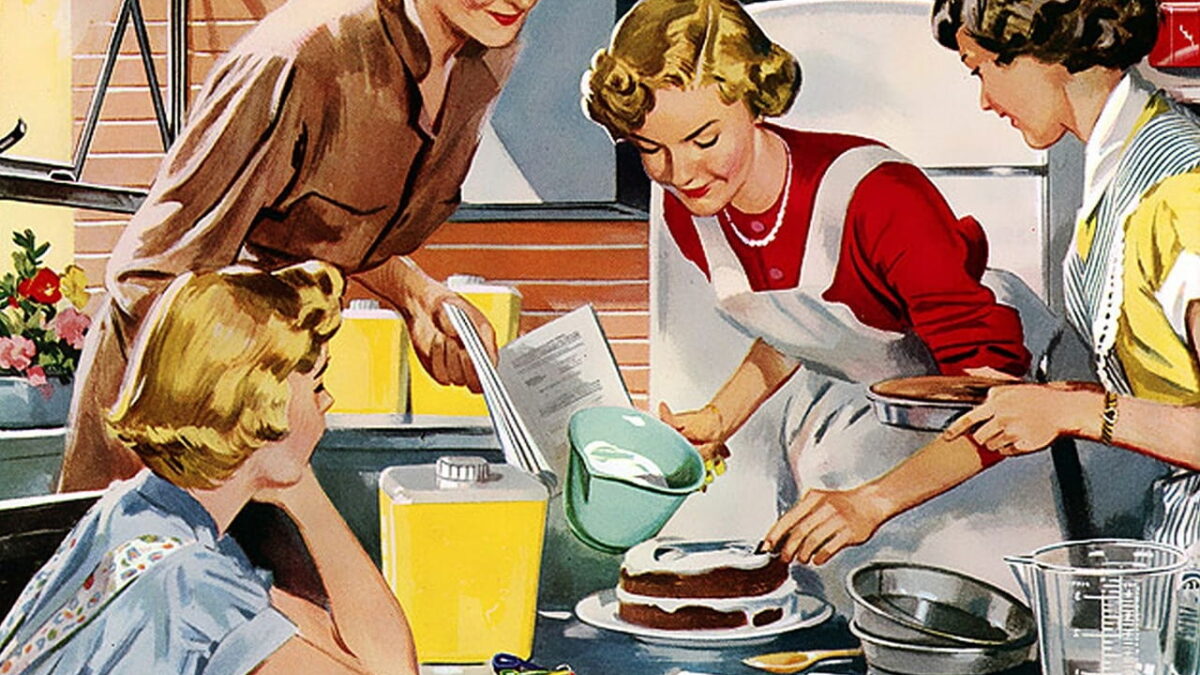
Our Republic may be flying to pieces, but at last we find cause for rejoicing. The pink pussyhats of women’s-march infamy seem to have gone out of style. In their place, liberal feminists have developed a new protest uniform: the red cloak and white hood of Margaret Atwood’s “Handmaid’s Tale.”
This is a huge improvement. As a mom, I’m thrilled to know that I won’t need to pull a U-turn should I happen across a pro-abortion protest on the way to soccer practice. Instead, I can seize the opportunity to talk to my kids about the idiosyncrasies of Anabaptist theology. What a relief!
The Forbidden Thrill of Dystopia
What’s up with this costume, though? “The Handmaid’s Tale” is a dystopian story of a mostly-infertile world ruled by a puritanical patriarchy. In the story, the red cloaks are worn by the few remaining fertile women, who are assigned to wealthy men as breeder-slaves. Abortion supporters explain that the costume is appropriate, because the handmaids of Atwood’s tale are forced to give birth, and the same can be said of any woman who is denied the option to kill her child in utero.
Let’s start with the obvious. Feeling pressure (legal, social, or moral) to carry an already-conceived child to term is not remotely the same as being forced into sexual-reproductive slavery. Still, the handmaid theme delights progressives by reinforcing every stereotype they already believe about groups they’re inclined to hate. Christians are monsters who want to repress women. Men are monsters who want to repress women. Republicans are monsters who want to repress women. It’s all there in one delightful red package.
There’s something more, though. Feminists are clearly titillated by this fundamentalist breeder-slave trope. It’s kind of a thrill for them to don the handmaid costume. On some deeper psychological level, is it fun for them to think of themselves as “walking wombs”?
Reductivists of a Feather
There’s always been a fascinating symmetry between liberal feminists and religious fundamentalists. In mirror-opposite ways, both are inclined towards reductivist understandings of femininity. Neither one can stomach the remarkable complexity of full-blooded womanhood.
As a member of the human race, a woman is a rational animal, endowed with the capacity to know and love. As a female, she is physiologically oriented towards maternity, and that fact is hugely significant to the lived experience of being female. In terms of raw physical abilities, we women are inferior in most respects to men: smaller, slower, weaker. That’s primarily because our bodies are calibrated to give us one incredible capacity that no man has: with our very bodies, we can gestate, bear, and nourish nascent human life.
It’s a tremendous power, and a heavy burden; it’s understandable that some people can’t quite get their heads around it. Both feminists and fundamentalists, in their varying ways, are daunted by the curiosity of a rational soul in a procreative body. Thus, they try to compensate by taking some components off the table.
How Feminists Reduce Womanhood
For feminists, the body must be marginalized into submission. Women come to be seen (just like men!) as autonomous personal-preference maximizers, though they remain slower, weaker, and prone to pregnancy. (This is obviously a sore point, and in the feminist view, aggressive measures must be taken to compensate for this intolerable injustice of physiology.) We can see the essence of this paradigm when Gloria Steinem tells us, “Everybody with a womb doesn’t have to have a child any more than everybody with vocal chords has to be an opera singer.”
It’s a ludicrous analogy. Singing opera is but one highly rarified use of an extraordinarily useful part of our anatomy; the womb, by contrast, is one of multiple female body parts that serve no other purpose except to facilitate the making of new humans. Still, we can appreciate why Steinem says such things. She wants to emphasize that women are permitted to have babies, only so long as it’s universally understood that this is just one of many life options. The body cannot really tell us anything significant about womanhood as such.
Fundamentalists go the other way by treating the body as an all-defining template for womanhood. Rationality is fine so long as it supplements the woman’s proper (maternal) role, but any interest or pursuit that competes with the domestic role is viewed as an attack on femininity itself. The fundamentalist may lavish all manner of praise on clever, artistic, and well-read women, who decorate homes, organize neighborhood functions, and homeschool multiple children. In the end though, it is critical to insist that woman’s natural place is at home, and that any fulfillment she may claim to find outside of that sphere is false, selfish, and vainglorious.
Both feminists and fundamentalists are trying to build a comprehensive account of womanhood using a radically incomplete set of parts. One ends up marginalizing motherhood as a mere hobby or lifestyle choice. The other sees motherhood as the gravitational center towards which all other legitimate feminine activities must flow. Both of these pictures are reductionist, and reductionism can give rise to egregious injustice, as history shows us time and again.
Fixating On The Womb
The womb is a powerful organ. It leaves its mark on a woman’s psychology, whether not she has the self-awareness to come to terms with it. For feminists trapped in one reductivist vision, it’s surely exciting to “try on” another, ostensibly in protest but probably with some level of delight (at least at the subconscious level).
The handmaid costume screams to the world, “I have a womb!” Atwood’s handmaids are commodified precisely because their reproductive capacity is so precious. For most ordinary women, actual pregnancy provides a suitable occasion for meditating on their body’s remarkable life-giving power. For an unhappy few, though, dystopian breeder fantasies may be available outlet.
The point here is not that liberal feminists secretly want to be enslaved and raped by tyrannical patriarchs who steal away their children. They don’t, and while “The Handmaid’s Tale” is fictional, sexual slavery is still horrifyingly real in our world today. No woman actually wants that. No woman should have to endure it.
The point is that reality, once denied, has a way of sneaking back into our mind and imagination. Adolescent boys, lacking healthy opportunities to test their mettle against other boys, may find more disturbing and violent outlets for those competitive instincts. Those may crystalize into what is now sometimes termed “toxic masculinity”. Meanwhile, when girls are taught to regard their wombs as nature’s unjust imposition on womankind, they may become disturbingly captivated by freakish fantasies whose exploitative character at least acknowledges that they have something worth exploiting.
Female fertility can be worth exploiting. It can also be valued in more humane ways. Instead of re-enacting dystopian novels, perhaps we should work harder on exploring those possibilities.









